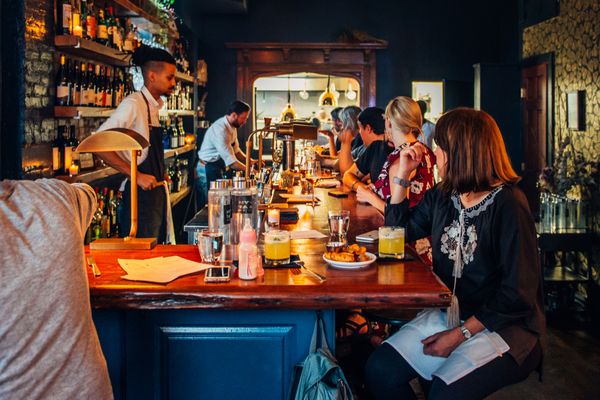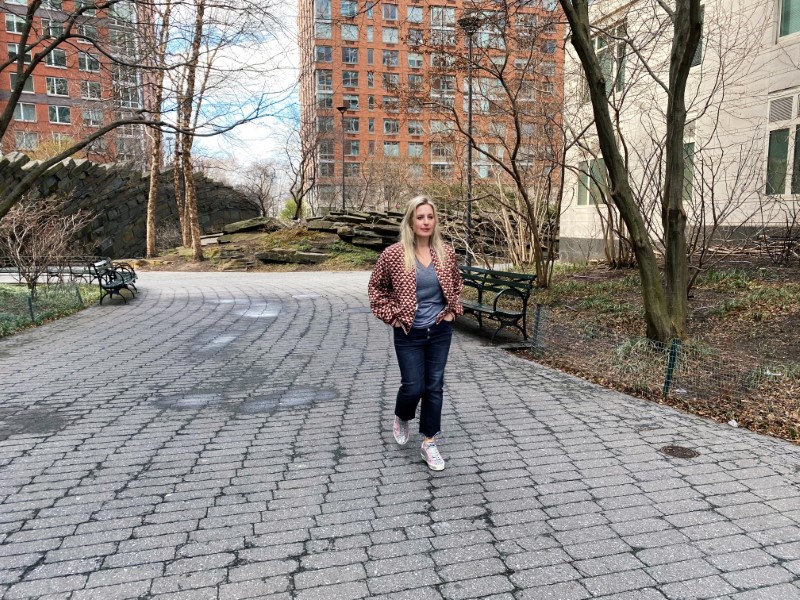Population - Employment - Households - Income / Financial - Housing - Education - Marital Status - Means of Transport to Work
Park Slope Population Demographics top
The Soup Bowl of Park Slope. 319 7th Avenue, Brooklyn, New York, New York 11215, United States.
| Total Population | 38,878 |
| Male Population | 18,595 |
| Female Population | 20,284 |
Park Slope is an area in Northwestern Brooklyn,Brooklyn,New York City,New York with a population of 38,878. There are 18,595 male residents living in Park Slope and 20,284 female residents. The total number of households is 16,150 with 2 people per household on average.The median age of the current population is 36 with 15,977 people being. RELATED: The Park Slope Food Coop Has an Apathy Problem While some were disappointed the Coop didn't 'go the democratic route' and put the question of the boycott to the 16,000 members of the Coop, others are happy that this is all behind them now and they can go back to selecting delicious cheeses from the array of options and sharing recipes.
| Median Age | 36 |
| Citizen US Born | 30,659 |
| Citizen not US Born | 4,886 |
| Not Citizen | 3,333 |
| Moved from Abroad | 401 |
| Moved from Same Country | 3,110 |
| Moved from Same State | 1,499 |
| Moved from Different State | 918 |
| Same House as Last Year | 32,337 |
Occupational Employment in Park Slope top
| Self Employees | 3,591 |
| Private Companies | 13,228 |
| Governmental Workers | 2,567 |
| Not for Profit Companies | 3,437 |


Number of Households in Park Slope top
| Total Households | 16,150 |
| Average People Per Household | 2 |
| Family Households | 8,854 |
| Non-family Households | 7,296 |
| Households with Children | 4,716 |
| Households without Children | 11,435 |
Median and Average Income in Park Slope top
| Average Household Income | $179,029.35 |
| Median Household Income | $125,733.00 |
| People below Poverty Level | 3,472 |
| People above Poverty Level | 34,451 |
Housing in Park Slope top
| Housing Units | 17,527 |
| Built in 1939 or Earlier | 11,914 |
| Built between 1940 and 1949 | 882 |
| Built between 1950 and 1959 | 932 |
| Built between 1960 and 1969 | 654 |
| Built between 1970 and 1979 | 501 |
| Built between 1980 and 1989 | 353 |
| Built between 1990 and 1999 | 292 |
| Built between 2000 and 2009 | 1,014 |
| Built in 2010 or Later | 987 |
| Occupied Housing Units | 16,150 |
| Owner Occupied | 5,982 |
| Renter Occupied | 10,168 |
| With Mortgage | 3,885 |
| Without Mortgage | 2,097 |
| Median Value with Mortgage | $1,296,000.00 |
| Median Value without Mortgage | $1,189,250.00 |
| Median Housing Costs per Month | $2,244.00 |
Park Slope Education Statistics top
| No High School | 1,063 |
| Some High School | 4,083 |
| Some College | 2,996 |
| Associate Degree | 1,023 |
| Bachelor's Degree | 11,113 |
Marital Status in Park Slope top
| Never Married | 13,380 |
| Married | 15,977 |
| Separated | 556 |
| Widowed | 955 |
| Divorced | 1,693 |
Means of Transport to Work in Park Slope top
| Car | 2,076 |
| Bus or TrolleyBus | 364 |
| Railroad | 20 |
| Ferryboat | 2 |
| Bicycle | 708 |
| Motorcycle | 24 |
| TaxiCab | 93 |
| Walk | 1,858 |
Recently added listings in Park Slope top
- 8Beds
- 2Baths
- 3Beds
- 1.5Baths
- 2Beds
- 2Baths
- 2Beds
- 1Baths
- 3Beds
- 3Baths
This story is a second installment of a three-part series looking at the gentrification of the Upper West Side, Park Slope and Soho more than two decades ago.
Hookup Now In Park Slope Brooklyn
Explore Park Slope’s Seventh Avenue on a sunny weekend day and you’ll see mothers with children tucked in strollers, a packed Barnes & Noble and busy restaurants. Turn off the main drag and the tree-lined cross streets are full of tidy brownstones. Fifth Avenue, once shunned as less desirable, is now a strip of trendy restaurants, bars and shops.
Today’s Park Slope, a neighborhood enclave for families and upscale ex-hipsters, began to take visible shape in the 1970s and 1980s, around the same time as the transformation of the Upper West Side and Soho. Manhattan refugees began to discover its brownstones and moved to the neighborhood in search of great deals on more space.
“Park Slope is one of the great recent stories of the outer boroughs, an urban neighborhood that acquired a solid, family-oriented, middle-class identity in the late 1960s and early 1970s and has managed to hold on to that identity in the decade since,” The New York Times said in 1984. “It has not become an enclave of the rich, as so many parts of the Upper West Side of Manhattan have done, but neither has its economic base slipped away.”
Another Times story that year, by columnist Maureen Dowd – then a lowly beat reporter – recounted the tale of a mother of two who moved from Greenwich, Conn., to a Madison Avenue apartment in Manhattan, then to a four-story brownstone in Park Slope.
“What happened?” one of her acquaintances asked her sympathetically.
But what had happened was an up-and-coming neighborhood and good deals to be had. The woman and her husband paid $267,000 for the townhouse on Berkeley Place, the same amount they got for their two-bedroom coop on the East Side.
“There are some nice apartments on Park Avenue that would have the [same amount of room] for $750,000,” the woman was quoted as saying.
New York City planning officials even weighed in with their stamp of approval that year, with a study calling the area a model of “positive” gentrification.

However, there was some backlash about pushy Manhattanites moving in. “Quichefication” was what Robert Acito, district manager of Community Board 6, called the changes in the area, and others noted how pizza shops were moving upscale with then exotic Yuppie-inspired toppings, like broccoli. Community activists complained about the difficulty of finding one-bedroom rentals for under $600 a month.
Before gentrification in the 1980s, Park Slope was home to successive waves of residents. Irish and Italian working class displaced the brownstone gentry before World War II, followed by the transition period of the 1960s, when, block upon block, white ethnic residents moved to the suburbs, and blacks and Hispanics took their place in the ethnic mix.
Today, Park Slope embodies the results of the trends that began gentrification in the 1980s.
Patricia Neinast, senior vice president at the Corcoran Group and a neighborhood native, said one of her current listings, a four-story brownstone, also on Berkeley Place, was priced at $2.6 million. The range for houses above Seventh Avenue, which are closer to Prospect Park, is $2.5 million to $4.5 million.
Mark Gerbush, the owner of 200 Fifth, a restaurant and bar that’s been on the street for 18 years, said residents of the brownstones between Fifth and Sixth tried for years to avoid the pervasive seediness of Fifth Avenue in the early ’80s.
Gerbush, who was born and raised in Bensonhurst, thought his sister was “out of her cotton-picking mind” to buy a house on Degraw between Fourth and Fifth avenues in the mid-1980s. At the time most corners along Fifth were flanked by a drug dealer or two. Homeless people burned fires in trash cans.

“When my sister bought her house there were burnt-out buildings all around her,” Gerbush said. He said out of “stubbornness” he decided to sign a 20-year lease and open the restaurant. The stock market crash of 1987 slowed the neighborhood’s development and crime kept potential customers away. Gerbush eventually bought the building.
Now Fifth Avenue has gentrified so much that the non-profit Fifth Avenue Committee, which worked to prevent landlords from evicting lower income renters, can’t even afford to rent the amount of space it needs on the street. The group has relocated to the other side of Fourth Avenue, according to a recent story in the Times.
While gentrification has been good for business, Gerbush said he misses what he calls the “Brooklyn feel” of the neighborhood and worries that the community has lost some of its diversity. The neighborhood is getting younger.
“It’s been good for my business, so I can’t complain,” said Gerbush, 49. “I feel like an old fart now with all the young people moving in.”
The revitalization of Park Slope has spread to many other Brooklyn neighborhoods, including Clinton Hill, Fort Greene, Boerum Hill, Williamsburg and Bedford- Stuyvesant. Finding the bargains of the past in those areas is tough, if not impossible, Neinast said. Bargain hunters are moving to areas such as Red Hook, Bushwick and Greenwood Heights – the area between the south end of Park Slope and Sunset Park.
Hookup Now In Park Slope Park
As for Park Slope, Gerbush may put it best:
Hookup Now In Park Slope Ridge
“Anybody who hasn’t made big money by now is going to be priced out.”